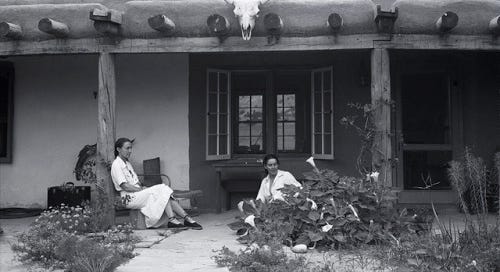
We think we tell stories, but stories often tell us, tell us to love or to hate, to see or to be blind. Often, too often, stories saddle us, ride us, whip us onward, tell us what to do, and we do it without questioning. The task of learning to be free requires learning to hear them, to question them, to pause and hear silence, to name them, and then to become the storyteller.—Rebecca Solnit, The Faraway Nearby
November 7 marked the big event of my book year: the release of Someone Always Nearby: A Novel of Georgia O’Keeffe and Maria Chabot. It had been in the works for well over a decade, and like every other writing project, has a backstory of its own. Let me tell you about it.
If you were asked to name a prominent woman painter of the twentieth century, Georgia O’Keeffe’s name would probably be at the top of your list. I enjoyed h…
Keep reading with a 7-day free trial
Subscribe to Thyme, Place & Story to keep reading this post and get 7 days of free access to the full post archives.



